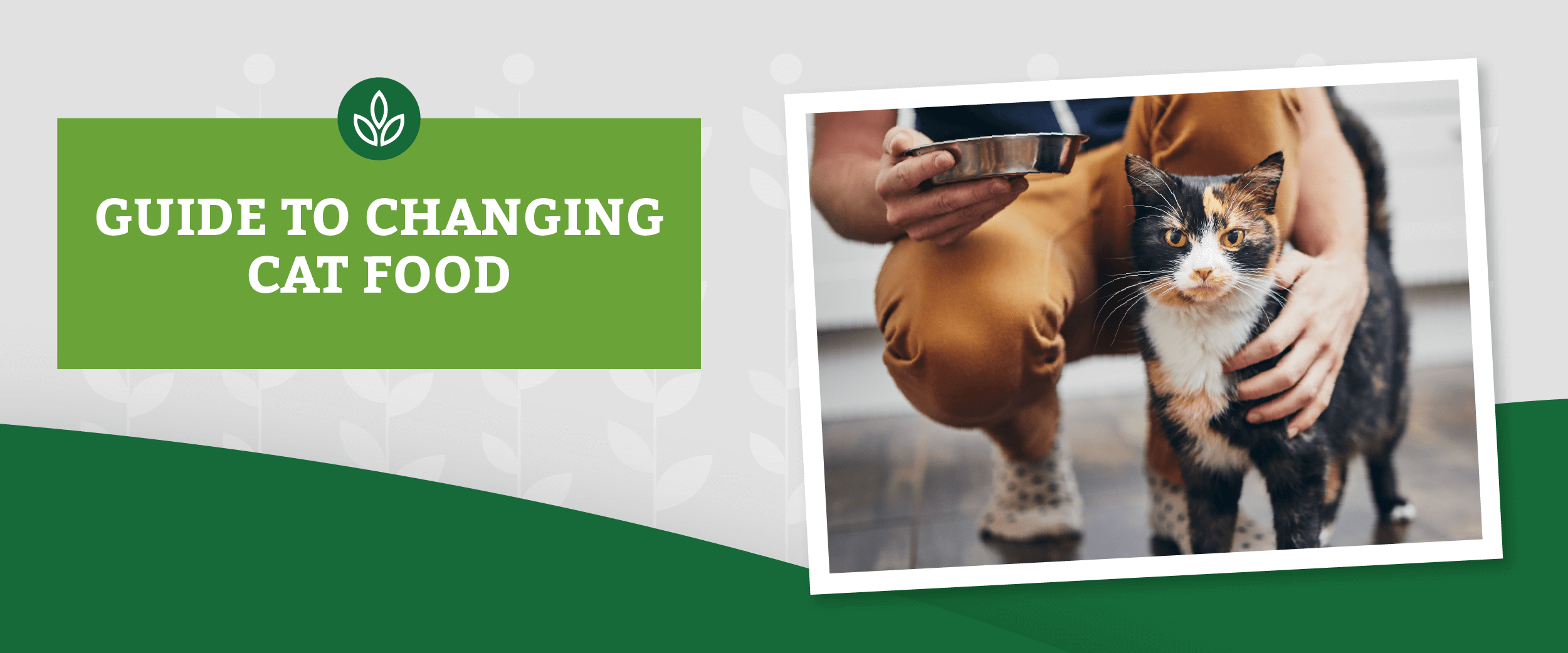A Guide to Changing Your Cat’s Food
What we eat can have a big impact on how we feel, look, and behave— and the same applies to your cat. Because our cats can’t verbally communicate with us, it’s important to understand how changing your cat’s food may affect your feline friend before making the switch. We all know cats can hold a grudge so to help make a smooth transition, we’ve put together this simple guide to changing cat food.
Why Change Your Cat’s Food?
Much like us as pet parents, cats’ nutritional needs can change throughout their lives. Whether you have a playful kitten or an aging cat, there are a number of reasons why you may be looking at changing your cat’s food. Some of the most common reasons are:
- Your cat’s needs have changed. Whether it’s because of their lifestage or lifestyle, your cat may benefit from food rich in specific ingredients or enhanced protein.
- Your cat is no longer thriving on their previous food. You may have noticed that they’re not as enticed to eat or that their energy levels have dipped.
- Your cat needs more or fewer calories. You or your vet may have noticed that your cat is getting a bit too plump or not rounding out enough. Whether your cat needs to lose weight or gain weight, switching foods might be needed to help keep them healthy and happy.
Whatever the reason for feeding a new cat food, it’s worthwhile to discuss the plan with your vet to confirm that it’s the best course of action for your feline family member.
How to Select the Right Food For Your Cat
Before switching to a new cat food, ask yourself the following questions to determine what food might be the best option for your cat.
How Does Your Cat Look?
Look at your cat and try to make an honest assessment of their appearance. Do they need to gain or lose weight? If you’re not sure what a healthy weight would be for your specific cat, we recommend talking with your vet.
You’ll also want to take note of your cat’s overall appearance. How do their skin and coat look? Do they appear physically healthy and strong? Keep in mind that how your cat looks on the outside is typically an indicator of what’s going on inside. If you have any concerns about their coat health or overall appearance, switching to a new food could help. For instance, foods with high levels of omega-3 and omega-6 fatty acids can help contribute to a shiny, healthy coat for cats.
Taking a good assessment of your cat’s current appearance can help guide you in finding a new food as you might look for a recipe with a different number of calories, or for nutrients that your cat might not have been eating in their old recipe, but can benefit from.
How Are Your Cat’s Energy Levels?
While the energy level of your cat can vary based on their breed and age, it’s important to note changes to their energy levels that happen quickly. If they’ve become more lethargic, less interested in play, or alternatively are hyperactive and don’t seem able to rest easily, those could be signs that you may need to change their food. If you have concerns about a quick change in your cat’s energy levels, it’s a good idea to chat with their vet.
What is Your Cat’s Age?
Your cat’s age can influence how they respond to new food. Older cats tend to be more selective or sensitive with what they eat, so you may need to take extra care when changing the diet of an older cat.
Kittens also have unique nutritional needs. Keep in mind that kittens have smaller teeth, so they may struggle to chew dry food. In this case, moisten their kibble with a liquid, like bone broth or opt for a canned food option.
Does Your Cat Have Dietary Restrictions?
If you already know that your cat has sensitivities or doesn’t react well to certain proteins or ingredients, be sure to closely review the ingredient label of the new food you’re looking at to avoid feeding them something that could irritate them.
Indicators that your cat may be dealing with a food sensitivity may include vomiting, diarrhea, hair loss, or itchy skin, to name a few
Cats can have food allergies, so offering a novel protein source like rabbit may help cats who are allergic to more common proteins.
How to Introduce New Food to Your Cat
Once you’ve found a good recipe for your cat’s needs, changing their food should be a gradual process. Following the simple steps below can help ensure your cat has a smooth transition to their new diet.
Transition Slowly
Over the course of seven to 10 days, slowly increase the amount of new food you give to your cat. Unless you’re looking to help your cat lose weight, the overall calories consumed shouldn’t change so be sure to compare the new food’s recommended feeding guide to the previous.
By the end of the 10-day period, have your cat fully transitioned to the new food if they have not experienced negative side effects during that time. It’s important to follow this gradual transition plan, even if switching to a new food from the same brand or a food that has the same proteins or overall similar ingredients, to help avoid digestive issues that can occur from switching too quickly.
Pet parents who make a sudden shift in food sometimes think the new food they’ve selected isn’t working for their pet because they’re seeing a negative digestive response, but it could actually be a side effect of switching too quickly. Taking your time and doing a proper transition will help you in identifying if the new food is a good fit for your cat.
Make Note of How They Respond
Some cats may adapt to the new food relatively quickly—you’ll be able to tell if their energy levels, enjoyment of the food, and bowel movements don’t change. Other cats will need more time, and that’s perfectly fine. Either way, changing food should be a slow process. Be patient and if you suspect that your cat isn’t responding well, stop serving them the new food and reach out to your vet if needed.
Conclusion
Your cat’s diet is a big driver of their overall health and looking to change their food is an important decision. Work with your vet to ask the right questions before making a switch, research to find the best recipe for your cat, take your time in the transition, and closely watch your cat’s reaction to the new food.
We want to help your cat thrive! Offering 100% all natural food, we’d be happy to share a personalized recipe recommendation for your specific cat. Send us a message to talk with our team. We look forward to hearing from you









